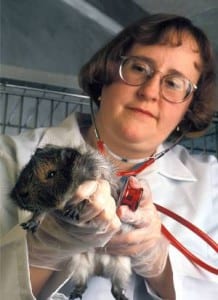Mice People: Cultures of Science
By Jack Ashby, on 12 March 2012
Last week, as part of this term’s Humanimals Season, we ran an event where Gail Davies, a kind of polymathic geographer working at the intersection of science and medicine, ethnography, bioethics, history, sociology and geography, was in conversation with former geneticist Steve Cross (now Head of Public Engagement at UCL). They chatted through Gail’s research on the culture of the scientists who work with lab mice, and the history of the field that everybody knows exists, but few know much about.
Clare Ryan from UCL Communications wrote up the evening for the UCL Events Blog. She begins…
Mice People: Cultures of Science
By Clare S Ryan, on 9 March 2012
Gail Davies (UCL Geography) travels around the world looking at laboratory mice, and the scientists who study them. To find out why a geographer would be spending her life doing this, I went to hear her in conversation with Steve Cross – Head of UCL’s Public Engagement Unit (and a closet geneticist) – at the event Mice People: Cultures of Science organised as part of the Humanimals season at the UCL Grant Museum of Zoology.
Gail is a human geographer interested in how science works, both in terms of the interface between nature and culture, and the spatial aspects of science.
A big part of her work is looking at how science varies internationally. Taking an extremely broad view of science, there have been two big “science migrations”. The first was after World War II when many European scientists moved to America. The second is happening now, with a huge shift in science going towards south-east Asia.
However, scientists don’t move around the globe alone. In the case of quite a few biologists, they take their mice with them. In fact, as Gail explained, if you take away apparatus, knowledge of standard methods etc., “the international knowledge economy looks rather furry”.
At this point, Gail put up a massive chart showing the genealogy of all the mice strains that have been studied by science and their locations. Imagine a genealogy map from the TV programme Who Do You Think You Are?, but much more scary.
Looking at the chart, Gail pointed out that the first people to breed mice (known as ‘fanciers’ in the trade) were in China more than 200 years ago.
The first mice to be bred for use in a laboratory were owned by an American called Abby Lathrop in the early 20th century. Her farm in Massachusetts (which at one point had up to 11,000 mice) was the first to sell mice to labs, and those mice are the forefathers of all the lab specimens in the world today.
The interesting thing about mice, and the infuriating thing for scientists, is that they mutate (i.e. their genes randomly change) a lot. No, really. A lot.
You can read the whole of Clare’s post here.
 Close
Close


